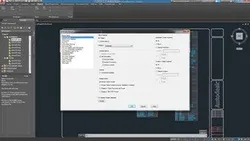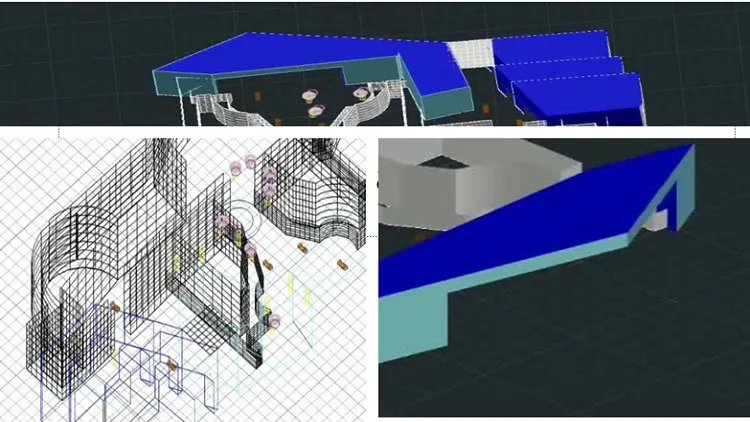
Learn AutoCAD Electrical from Scratch 
This course provides a comprehensive introduction to AutoCAD Electrical, a powerful software for increasing productivity. Learn the basics and gain the skills to use AutoCAD Electrical for your own projects. ▼
ADVERTISEMENT
Course Feature
![]() Cost:
Cost:
Free
![]() Provider:
Provider:
Udemy
![]() Certificate:
Certificate:
Paid Certification
![]() Language:
Language:
English
![]() Start Date:
Start Date:
On-Demand
Course Overview
❗The content presented here is sourced directly from Udemy platform. For comprehensive course details, including enrollment information, simply click on the 'Go to class' link on our website.
Updated in [February 21st, 2023]
Learners can learn from this course a variety of topics related to AutoCAD Electrical. They will gain an understanding of the background knowledge of electrical components, their symbols and the different terminologies used in the electrical domain. They will learn how to start working in the software, including the interface sections, useful commands, and different types of electrical drawings and electrical circuits. They will also learn about the ACADE interface sections, how to hide/unhide Ribbon tab and command window, how to adjust size of crosshair, pick box and aperture size, how to save drawings and plot in pdf format, and how to divide and object in different sections. Additionally, they will learn about the project manager, including how to start working in the ACADE project manager interface, how to open WDP files, how to import/export drawings, how to create a new project and set its dialog box, how to use the Library and Icon menu paths in project properties, and how to create, add, and remove drawings in a project. Finally, they will learn about the different standards of drawings and the differences in drawings due to different templates on the basis of Limits and Units.
[Applications]
After completing this course, students will have a comprehensive understanding of AutoCAD Electrical and its features. They will be able to apply the knowledge they have gained to create electrical drawings and circuits, as well as to use the software to enhance their productivity. Additionally, they will be able to use the project manager to create and manage projects, as well as to import and export drawings.
[Career Paths]
1. Electrical Design Engineer: Electrical Design Engineers are responsible for designing, developing, and testing electrical components, systems, and equipment. They use AutoCAD Electrical to create electrical schematics, diagrams, and drawings. They must have a strong understanding of electrical engineering principles and be able to troubleshoot and solve complex electrical problems. Developing trends in this field include the use of advanced technologies such as artificial intelligence and machine learning to automate the design process.
2. Electrical Technician: Electrical Technicians are responsible for installing, maintaining, and repairing electrical systems and equipment. They use AutoCAD Electrical to create diagrams and drawings of electrical systems and components. They must have a strong understanding of electrical engineering principles and be able to troubleshoot and solve complex electrical problems. Developing trends in this field include the use of advanced technologies such as robotics and automation to improve efficiency and accuracy.
3. Electrical Project Manager: Electrical Project Managers are responsible for managing the design, development, and implementation of electrical projects. They use AutoCAD Electrical to create electrical schematics, diagrams, and drawings. They must have a strong understanding of electrical engineering principles and be able to manage complex projects. Developing trends in this field include the use of advanced technologies such as virtual reality and augmented reality to improve project management.
4. Electrical Engineer: Electrical Engineers are responsible for designing, developing, and testing electrical components, systems, and equipment. They use AutoCAD Electrical to create electrical schematics, diagrams, and drawings. They must have a strong understanding of electrical engineering principles and be able to troubleshoot and solve complex electrical problems. Developing trends in this field include the use of advanced technologies such as the Internet of Things (IoT) and cloud computing to improve efficiency and accuracy.
Pros & Cons

Good level of information

Good for beginners

Perfect for kickstart

Unique learning experience

Poor content

Poor quality images

Needs more command explanation
Course Provider

Provider Udemy's Stats at AZClass
Discussion and Reviews
0.0 (Based on 0 reviews)
Explore Similar Online Courses

Rook Endgames - Every class on rook endgames from our Chess course can be found here Learn this crucial topic with National Master Robert Ramirez

Starting an online clothing brand

Python for Informatics: Exploring Information

Social Network Analysis

Introduction to Systematic Review and Meta-Analysis

The Analytics Edge

DCO042 - Python For Informatics

Causal Diagrams: Draw Your Assumptions Before Your Conclusions

Whole genome sequencing of bacterial genomes - tools and applications

Learn Autocad basics from projects

AutoCAD Basic Commands for Beginners with practical Approach


Start your review of Learn AutoCAD Electrical from Scratch